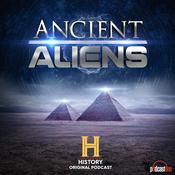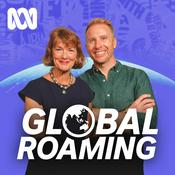17 episodes

The Soundtrack of Australia
14/08/2023 | 33 mins.
In 1977, we sent a Golden Record of the sounds of Earth into space with NASA's Voyager probes.This 'cosmic' calling card inspired the program team to make this - a golden record of Australian sounds.It varies from Nature Track - there are human made sounds and there are human voices, these soundscapes are layered sounds from all over Australia - they're not natural soundscapes.To create the soundscape for our vinyl record - our teams recorded over 200 bespoke sounds - many of which have been arranged into the final composition. Sounds were gathered from as far as the Perth Canyon (20km west coast of Rottnest Island) and as remote as Warramunga in the Northern Territory.Ann's listening notes:01:00 The beach, above and under the water. 03:00 Pygmy Blue whale song06:00 Catching a ferry in Sydney07:20 A plane, there:s always a plane. 08:30 Catching a train09:00 Can you hear Tom Thum, the beat boxer here? Also you can hear street sounds from Newtown in Sydney. 10:10 A snippet of a conversation that has a swear word in it. 10:30 Iconic Australian pedestrian crossing with the sounds of the city. 11:40 Cicadas buzz, a lyrebird sings the taps are Kristian Benton searching for trees to fell to make a yidaki.16:00 Natural Sounds are often marred by the sounds of leaf blowers, whipper snippers and other machinery. 21:15 Car on a country road with cow and cockies. a typical Australian scene.22:30 The Orange Agricultural Show - announcements, motorbikes, chickens, shearing and whip cracking. 24:30 A wood chopping competition. 25:30 Driving on a dirt road - hear the dusty texture and the corrugations.27:15 Warramunga Seismic and Infrasound Research Station - one of the quietest places on earth.31:15 Wild cockatiels calling.RECORDINGS: Nick Peterson, Leo Sullivan, Peter Lenaerts, Sarah Henty, Dr Capri JoliffeSOUND DESIGN: Peter LenaertsSERIES PRODUCER: Elle GibbonsEXECUTIVE PRODUCER: Penny Palmer

Where there is water
20/09/2022
No music. No voices. Just the sound of a creek bed in outback Australia.In the Murchison district in Western Australia you're surrounded by low lying ranges where rocks have been found that are 4.4 billion years old — they're almost as ancient as the planet itself.Among the crests and dips of Wajarri country is a creek bed on Boolardy Station. Not flowing, but water is still there. And the places where there is water in this arid environment – well, it's a mecca for birdlife.Listen for: chiming wedgebills, lots of flies and other insects, rainbow bee-eaters, crested bellbirds, babblers and diamond doves among many many more. Mix Engineer: Isabella Tropiano.This program is produced on the land of the Wathawurung people.

The storm front
13/09/2022
No music, no human voices. Just the sound of an epic summer storm rolling on through the evening.I recorded this at my home. It had been a hot day, and in the late afternoon there was a crack of thunder. I walked out, set the recorder near the woodpile and recorded into the night.In this recording you can hear rain falling, hitting the earth and also hitting the microphones. And you can hear lots and lots of thunder.At first, the afternoon and evening chorus continues, but as the storm intensifies, just the cockies scream. Then, as darkness falls, insects take up the lulls between thunder and rain.Mix Engineer: Isabella Tropiano.This program is produced on the land of the Wathawurung people.

Sounds like camping
05/09/2022
No music, no human voices, just the sound of night falling over bushland near Narrabri, recorded by the ABC's Ann Jones. It sounds like camping.Narrabri is in North West NSW, in an incredibly fertile farming area. And yep, you guessed it, where it's fertile, it means you won't get much bushland left intact.This bushland is a patch on the Llara Farm which is used by the University of Sydney for research. I was lucky enough to travel there to film a program about technology and nature for 'Catalyst' on ABC TV.This recording differs a little from some of the others I've made for Nature Track. For example, there is no way that I can completely remove the distant sound of highway movement, of the endless trucks ferrying agricultural products towards the city.But this is an incredibly endearing mix of the insect chorus for me. It sounds like camping.A chorus of ravens in the distance, along with cockies going to sleep, and some sounds I cannot identify kick off this most relaxing soundscape yet.Listening notes from Ann Jones:00:00:45 I have no idea what this insect is, but I love it.00:10:20 I think this is actually a boobook – they make this sound when they're close to another boobook, rather than calling across a distance.00:30:35 One of the many sounds produced by foxes. They have a really wide vocabulary and can sound human-like, bird-like and just plain scary in the night.00:41:00 A bat circles past on its nightly food run echo-locating for both navigation and prey detection.00:46:30 A sneaky dog. I can't tell you how much time I spend pulling dogs out of nature recordings. They're almost ubiquitous in Australian landscapes00:58:40 I can hear a frog here, that's sounds a bit like a ruler twanged against a school desk. I think it might be a spotted marsh frog – Limnodynastes tasmaniensis.01:12:00 A distant boobook, the smallest owl in Australia, along with some fox calls and bat flybys.01:21:00 The terrifying scream of a barn owl. Yes, they look magnificent. Sound terror-ific too.Mix Engineer: Isabella Tropiano.This program is produced on the land of the Wathawurung people.

Quiet shoreline at sunset
29/08/2022
No music. No voices. Just the sound of a quiet ocean inlet in the early evening, recorded by the ABC's Dr Ann Jones. This shoreline is home to many wallabies; will they make any sound?This was recorded over the summer of 2021/22 as I was spending time on Phillip Island / Millowl in Victoria, filming for 'Meet the Penguins' on ABC TV. I put the recorder out at Rhyll Inlet as the sun is setting. It's been a hot day and the cicadas are calling. Rhyll Inlet is a mixture of saltmarsh, mudflats, mangroves and some scrubby bits too. Slightly uphill, away from the water, there are grassy areas where wallabies abound. This is where the recording is taken. Listening notes from Ann Jones:00:00:39 Lower toned repeating call given in a short burst is the white-eared honeyeater. This bird is striking. It's somewhere between green and yellow, with a black face and a blob of white right behind its eye.00:02:20 This is still that same honeyeater.00:02:35 Eastern rosellas – gorgeous birds and I can just imagine their tails fanning and shaking as they speak with each other.00:03:40 The kookaburras are joining the chorus – announcing to one and all how strong they are as a family, and how well defended their territory is.00:06:08 MAGPIES! This chorus gets better and better.00:07:38 The gorgeous clear flute-like quality gives this away as a grey shrike thrush. Followed closely by a masked lapwing. Phillip Island is a hot spot for masked lapwings, which like to rest on the ground. So, the fox-free island means they have good numbers.00:09:02 The red wattlebird sounds as if it's the shutter mechanism on a giant, broken camera.00:10:50 The first incursion of a cape barren goose into the recording.00:18:12 This is a wallaby moving, they sometimes thump down with surprising force.00:18:40 …and there it goes.00:21:45 The GST is really giving a fantastic performance.00:22:06 It wouldn't surprise me if this is a swamp wallaby snapping a stick to eat. They're voracious.00:25:40 The masked lapwing (maybe known to you as a kid as the spur-winged plover) goes past screaming.00:26:05 This is a grey butcherbird and it makes me doubt some of my grey shrike thrush IDs from earlier – they both can sing as if playing an enchanted flute.00:39:12 You can hear the fantails beak clacking as it calls, and flies about. It sounds like tiny little knuckles being cracked in rapid succession.Mix Engineer: Isabella Tropiano.This program is produced on the land of the Wathawurung people.
More Science podcasts
Trending Science podcasts
About Nature Track
Listen to Nature Track, Dr Karl Podcast and many other podcasts from around the world with the radio.net app

Get the free radio.net app
- Stations and podcasts to bookmark
- Stream via Wi-Fi or Bluetooth
- Supports Carplay & Android Auto
- Many other app features
Get the free radio.net app
- Stations and podcasts to bookmark
- Stream via Wi-Fi or Bluetooth
- Supports Carplay & Android Auto
- Many other app features


Nature Track
download the app,
start listening.


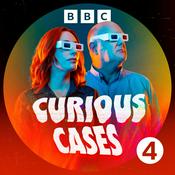

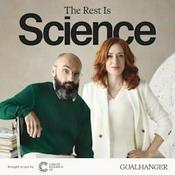
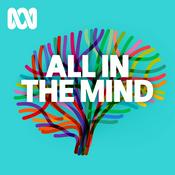










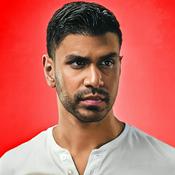













![Podcast Cosmosis [Formerly The UFO Rabbit Hole]](https://au.radio.net/podcast-images/175/the-ufo-rabbit-hole-podcast.jpeg?version=c4cfeed14331265219e0263fd62be755644a8cf4)


